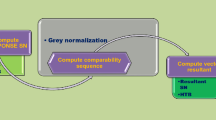Abstract
The ecological and environmental issues today encourage the use of eco-geo-materials that consume less «grey energy» , such as raw earth building material. This raw earth material is inexpensive and is generally available on the construction site. The compressive strength and ductility have a major role on its mechanical behavior. However, few studies are effectively dedicated to estimate both the compressive strength and the ductility property of raw earth materials. Treated with a very low percentage of binders, the raw earth is transformed into an eco-material suitable for use in the construction. However, the experimental study of the raw earth concrete mechanical properties presents uncertainties related to the bio-sourced nature of its components, such as plant fibers and raw earth. In this study, the raw earth samples of 25 different formulations were casted and tested for 90 days of curing time. The samples were tested for unconfined compressive strength through which ductility index were inferred. In order to optimize the formulation of this raw earth material, a «Design of Experiments» was conducted to study the effect of the various components on these two mechanical properties. A multivariate statistical regression technique of PLS, Partial Least Square, was performed to evaluate the design. This PLS technique was selected because of the complicated experimental design data along with different constraints on model based on the two responses. The obtained results show this technique could be a helpful tool to improve and optimize a raw earth concrete formulation.
Access this chapter
Tax calculation will be finalised at checkout
Purchases are for personal use only
Similar content being viewed by others
References
Zak, P., Ashour, T., Korjenic, A., Korjenic, S., Wu, W.: The influence of natural reinforcement fibers, gypsum and cement on compressive strength of earth bricks materials. Constr. Build. Mater. 106, 179–188 (2016)
Ashour, T., Korjenic, A., Korjenic, S., Wu, W.: Thermal conductivity of unfired earth bricks reinforced by agricultural wastes with cement and gypsum. Energy Build. 104, 139–146 (2015)
Araldi, E., Vincens, E., Fabbri, A., Plassiard, J.P.: Identification of the mechanical behavior of rammed earth including water content influence. Mater. Struct. 51, 88 (2018)
Earth building in Spain: Carmen Jimenez Delgado, M., Canas Guerrero, I. Constr. Build. Mater. 20, 679–690 (2006)
Al-Mukhtar, M., Lasledj, A., Alcover, J.F.: Lime consumption of different clayey soils. Appl. Clay Sci. 95, 133–145 (2014)
Herrero, A., Ortiz, M.C., Sarabia, L.A.: D-optimal experimental design coupled with parallel factor analysis 2 decomposition a tool in determination of triazines in oranges by programmed temperature vaporization-gas chromatography-mass spectrometry when using dispersive-solid phase extraction. J. Chromatogr. A 1288, 111–126 (2013)
Wold, S., Kettaneh-Wold, N., Skagerberg, B.: Nonlinear PLS modelling. Chemometrics Intell. Lab. Syst. 7, 53–65 (1989)
Eriksson, L., Byrne, T., Johansson, E., Trygg, J., Vikstrom, C.: Multi - and megavariate data analysis, basic principal and applications. 3rd edn, Umetrics Academy (2013)
Myers, R.H., Montgomery, D.C., Anderson-Cook, C.M.: Response surface methodology: process and product optimization using designed experiments, 4th edn. Wiley, New York (2016)
Eriksson, L., Johansson, E., Kettaneh-Wold, N., Wikström, C., Wold, S.: Design of Experiments: Principles and Applications. Umetrics AB, Umeå Learnways AB, Stockholm (2000)
Geladi, P., Kowaiski, B.R.: Partial least-squares regression: a tutorial. Anal. Chim. Acta 185, 1–17 (1986)
Wold, H.: Path Models with Latent Variables: The NIPALS Approach. Academic Press, New York (1975)
Hoskuldsson, A.: Prediction Methods in Science and Technology. Thor Publishing, Denmark (1996)
Li, B., Morris, A.J., Martin, E.B.: Generalized partial least squares regression based on the penalized minimum norm projection. Chemom. Intell. Lab. Syst. 72, 21–26 (2004)
Kettaneh-Wold, N.: Analysis of mixture data with partial least squares. Chemometr. Intell. Lab. Syst. 14, 57–69 (1992)
Assallay, A.M., Rogers, C.F., Smalley, I.J., Jefferson, I.F.: Silt. Earth-Sci. Rev. 45, 20–30 (1998)
Imanzadeh, S., Hibouche, A., Jarno, A., Taibi, S.: Formulating and optimizing the compressive strength of a raw earth concrete by mixture design. Constr. Build. Mater. 163, 149–159 (2018)
Eid, J.: New construction material based on raw earth: cracking mechanisms, corrosion phenomena and physico-chemical interactions. Eur. J. Environ. Civ. Eng. 8189, 1–16 (2017)
Abbar, B., Alem, A., Pantet, A., Marcotte, S., Ahfir, N.D., Duriatti, D.: Experimental investigation on removal of suspended particles from water using flax fibre geotextiles. Environmental Technology, Taylor & Francis Group, pp. 1–15 (2017)
Imanzadeh, S., Jarno, A., Hibouche, A., Bouarar, A., Taibi, S.: Ductility analysis of vegetal-fiber reinforced raw earth concrete by mixture design. Constr. Build. Mater. 239, 1–15 (2020)
Fisher, R.A.: The design of experiments. Hafner: Libraries Australia, New York (1971)
Goupy, J.: Plans D’expériences: Les Mélanges. DUNOD, Paris (2001)
Author information
Authors and Affiliations
Corresponding author
Editor information
Editors and Affiliations
Rights and permissions
Copyright information
© 2021 Springer Nature Switzerland AG
About this paper
Cite this paper
Imanzadeh, S., Jarno, A., Taibi, S. (2021). PLS Application to Optimize the Formulation of an Eco-Geo-Material Based on a Multivariate Response. In: De Cursi, J. (eds) Proceedings of the 5th International Symposium on Uncertainty Quantification and Stochastic Modelling. Uncertainties 2020. Lecture Notes in Mechanical Engineering(). Springer, Cham. https://doi.org/10.1007/978-3-030-53669-5_20
Download citation
DOI: https://doi.org/10.1007/978-3-030-53669-5_20
Published:
Publisher Name: Springer, Cham
Print ISBN: 978-3-030-53668-8
Online ISBN: 978-3-030-53669-5
eBook Packages: EngineeringEngineering (R0)




